Innovative Temperature-Sensitive Solutions: A Cold Treat
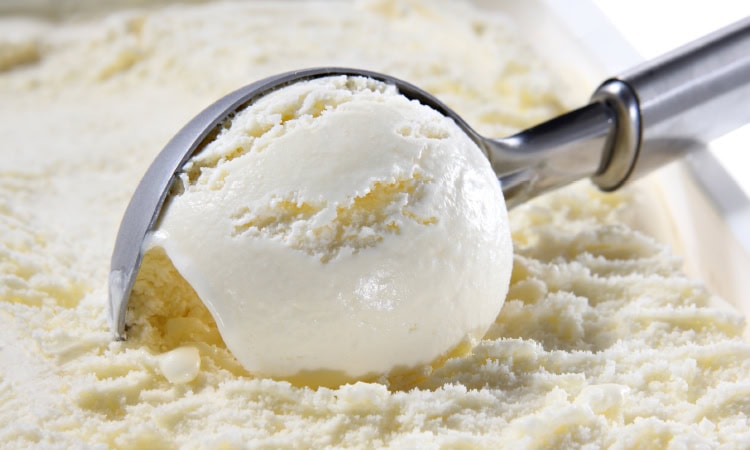
From ice cream to fresh produce to life-saving vaccines, the cold chain market is booming. Enter a wave of innovative solutions—smart packaging, cutting-edge telematics, and advanced freezing technologies—that are transforming the way temperature-sensitive goods journey from producers to doorsteps.
Until recently, few people other than supply chain and logistics professionals paid much attention to cold chain functions. That changed with the pandemic, which demonstrated the importance of robust cold chain solutions.
Between 2024 and 2032, the global cold chain logistics market is projected to more than double, jumping from about $325 billion to $862 billion (see chart below). To meet the growing demand on the cold chain, companies are innovating with new packaging and storage materials, robust communication technology, and improved processes for freezing goods.
These innovations will be essential, given the challenges ahead. For one, the average age of a cold chain facility is approximately 42 years. “There’s an aging infrastructure that’s currently in high demand,” says Kevin Coleman, CEO of CJ Logistics America.
The shortcomings in some current cold chain solutions make them less than ideal. Poor cold chain infrastructure could be responsible for up to 638 million tons of food loss annually, according to a 2024 study from the Center for Sustainable Systems at the University of Michigan.
The toll that some cold chain solutions impose on the environment is also attracting greater scrutiny. It’s estimated that around 15% of global fossil fuel energy is used in the refrigerated transport sector, finds a study by researchers at Italy’s Università di Salerno.
Driving Cold Chain Growth
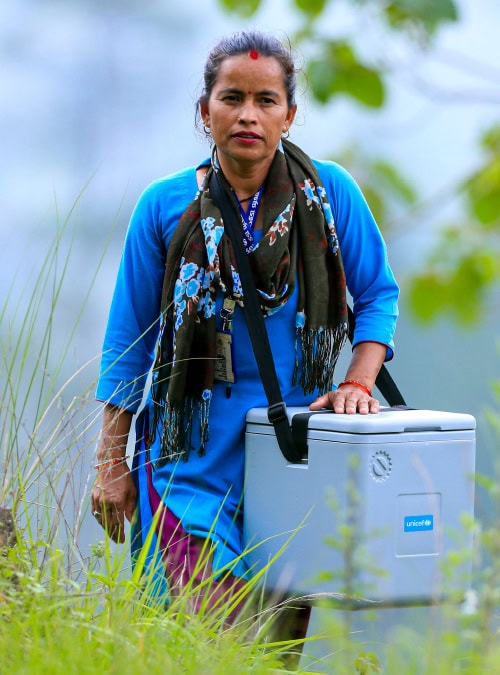
Cold chain innovations allow UNICEF to safely store and transport vaccines in special carriers, even in remote and challenging environments.
Innovations in cold chain solutions will also be key to complying with regulations, such as the Food Safety Modernization Act. Its rule on food traceability means companies need to ensure their systems can provide the traceability information required for foods covered by the act, says Sara Stickler, president and CEO with the Global Cold Chain Alliance and Global Cold Chain Foundation. Technologies that support data collection and the monitoring and recording of temperatures are particularly relevant. The compliance date for the rule is January 20, 2026.
Consumers have become accustomed to enjoying access to fresh produce year-round, with many items coming from around the world, says Pawan Joshi, executive vice president, products and strategy with e2open, which offers a connected supply chain software platform. Meeting this demand requires a reliance on the cold chain.
Cold chain technology is also key in healthcare. For example, UNICEF delivers more than two billion vaccine doses each year, says Thomas Sorensen, chief of immunization technology with the organization. Cold chain equipment plays a pivotal role in keeping vaccines cold and protected as they travel.
From telematics to packaging to cold storage, companies are advancing cold chain solutions. Here’s a closer look at these innovations.
Panel Points
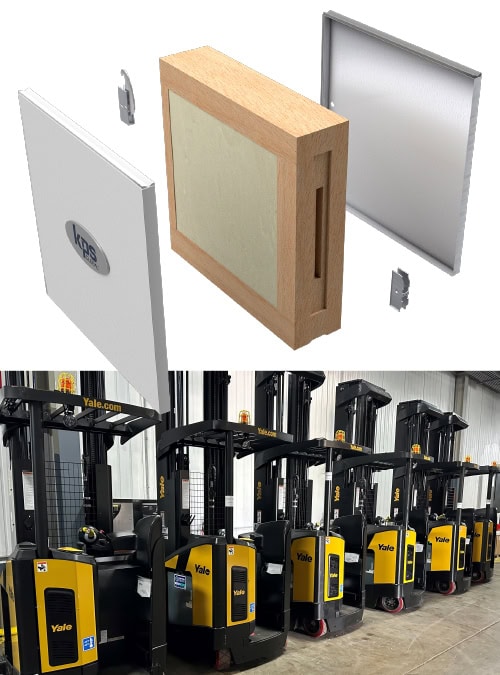
KPS Global (top) designs and manufactures panel systems with various thicknesses to help control humidity and temperature requirements. Interstate Cold Storage (bottom) has invested in six state-of-the-art lift trucks to enhance its cold storage warehousing solutions.
KPS Global manufactures insulated panel systems that use a hard-nose cam-lock system, which streamlines installation. Along with a gasket, this also helps keep water vapor out of each unit.
The panels can be customized to fit to the shape and dimensions needed, says Rob Sorba, president of KPS Global. This allows, for example, a prep cooler to be located near a deli counter; many standard coolers would be too large.
Because the panels are framed, they install quickly and can stand on their own, without needing support from the building itself. This is key in several scenarios, including when a company needs to retrofit an existing building. Organizations can use the panels to build out the interior space without having to do expensive structural work.
The panels also offer an economical solution when a company needs multiple climate zones within one building, Sorba says. KPS Global can build in its factories the interior doors necessary to creating multiple spaces within a building, cutting installation time.
For example, if a company is using panels to create 15,000 square feet of temperature-controlled space, KPS Global typically can do the core setup in 10 to 14 days, Sorba says. That compares to 10 to 12 weeks with traditional construction.
The Accessible Cold Environment (ACE) unit from KPS Global can boost labor efficiencies and reduce pick times when additional storage is needed for prepared, bulk, or fast-moving refrigerated products. The vertical lift system allows pallets to be easily moved into the chilled environment, slashing both load and pick times. Employees no longer need to head into a walk-in cooler to pull items.
“The ACE unit saves a ton of labor because you can just drop the pallet in and drop the slider door down,” Sorba says. Patented air curtain technology pushes air across the surface of the opening and cycles it back inside, so cold air isn’t lost.
Telematics Advances and Improvements
Telematics, or the transmission of digital information over long distances using wireless forms of communication, is also advancing.
A few decades ago, telematics provided simple GPS location alerts, says David Brown, senior product manager for transportation and telematics with ORBCOMM, a provider of Internet of Things technology and asset monitoring and control solutions. Over the past 10 years, however, telematics capabilities have improved, even as the sensors that collect information have become less expensive.
Today, the sensors embedded within refrigerated units can, among other capabilities, take temperature readings, monitor the frequency of door openings, and calculate any variations from established parameters. Then, the solutions can extract and offer this information in ways that drive business decisions, such as sending an email alert to employees who can take needed corrective action.
The solutions can also provide documentation showing a product remained within the required temperature range while in transport. This can reduce claims by recipients stating a product fell outside the specified temperature range. This capability helped a refrigerated carrier save roughly $400,000 in one year, Brown says.
TRU Innovation
Carrier Transicold’s latest diesel-powered transport refrigeration units (TRUs) have cleaner, more efficient engines. Carrier also offers units with electric standby capability that can be plugged into an external power source.
A more efficient electric vehicle can have a longer operating range, says Bill Maddox, senior manager, product management at Carrier. If more range isn’t necessary, it’s possible to shift to a smaller, lighter battery that charges faster.
“In addition, telematics can help fleets manage their electric vehicle operations more efficiently and get the performance they expect,” Maddox says.
The Vector eCool system from Carrier Transicold combines an all-electric trailer TRU with technology that uses motors in the wheel hub of the trailer to capture energy when the vehicle is in motion. Batteries under the trailer can store enough clean, regenerative energy to power the Vector TRU and reduce the vehicle’s overall fuel consumption and emissions.
Carrier Transicold also offers a telematics service that’s incorporated within its TRUs. Among other capabilities, the Lynx Fleet system allows shippers to activate and program their TRUs remotely, and to see how the TRU and its components are performing. They also can control conditions in the trailer without relying on a connection to a tractor. Because temperature-controlled trailers can sit untethered for long periods, the TRU telematics provide a real advantage, Maddox adds.
Chilling Just the Cargo
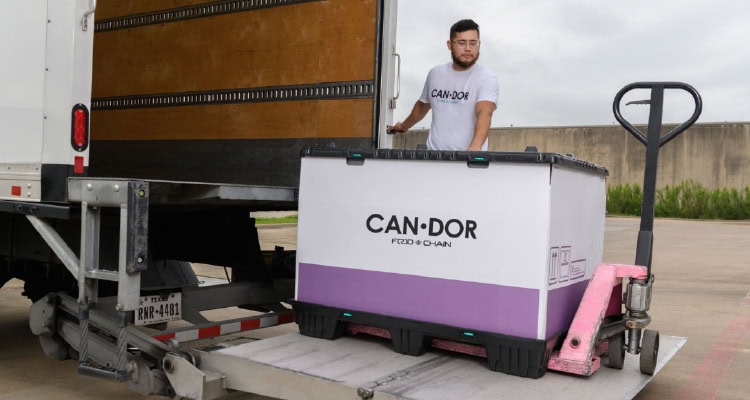
Candor Food Chain combines the company’s national shipping services with a unique technology—a fully reusable cold packaging solution that allows pallet and box-sized frozen and refrigerated shipments to go by regular transport and stay frozen or refrigerated for up to nine days.
Candor Expedite is currently working with clients to test a fully reusable cold packaging solution that allows pallet and box-sized frozen and refrigerated shipments to go by regular transport.
“Shippers can chill the cargo and not the truck,” says Nicole Glenn, founder and CEO of Candor. Cargo can stay frozen or refrigerated for up to nine days.
This solution also makes it possible to ship frozen, refrigerated, and dry cargo on the same truck, boosting flexibility and cutting costs. Probes provide live feeds of temperature readings and GPS tracking, showing the products’ temperature and location.
In addition to reducing carbon and refrigerant emissions, the boxes are fully reusable. The reusable panels inside the box are filled with a patented insulating material that contains food-grade ingredients. Insulation keeps outside temperatures from affecting the cooling panels. A rigid outer shell protects the contents, and a sturdy top and base allow for stacking on top of each other.
Vaccine Carriers Get a Shot of Innovation
Ensuring vaccines make it to all regions of the globe, including communities in remote villages and neighborhoods that lack health facilities and modern refrigeration equipment, is a daunting challenge. To meet it, relief organizations such as UNICEF rely on vaccine carriers.
The carriers, which look like coolers, are thermally insulated and lined with coolant packs to keep vaccines cushioned and within a specified temperature range during last-mile transportation. They are also designed to resist heat, vibrations, bumps and other environmental challenges.
Depending on the vaccine and the carrier size, the vaccines may remain cool for up to two days.
Innovation continues toward more advanced models, such as freeze-preventative vaccine carriers with insulated barriers that separate the vaccine storage compartment from the coolant. This reduces the risk the vaccine will freeze during transport.
Warehouse Automation
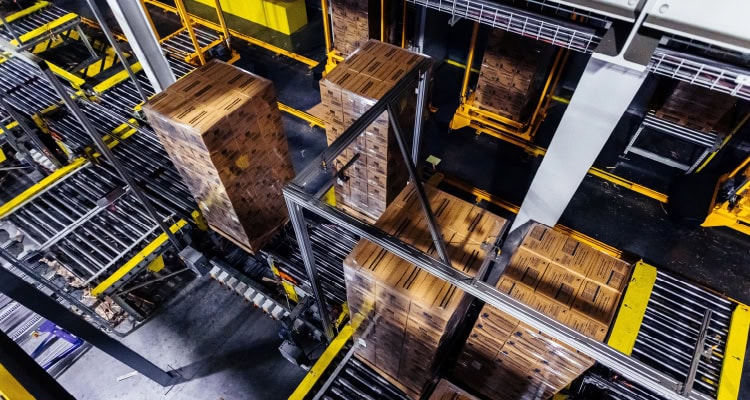
Lineage Logistics recently opened a new facility in Hazleton, Pennsylvania, that spans approximately 386,000 square feet and includes about 85,000 pallet positions to handle and store temperature-controlled food products. The building is equipped with cutting-edge technology and automation including cranes and rail-guided vehicles, which are used to store, move and retrieve products within the warehouse.
Lineage, Inc. recently opened a warehouse in Hazleton, Pennsylvania, that automates full-pallet movements, layer-picking, and less-than-layer picking using a variety of robots.
Using robots to automate these functions in public warehouses in the cold storage industry is new, notes Daniel Walet, senior operations research scientist for Lineage. The systems have to handle the jobs done by similar systems in dry facilities, while also accommodating the temperature and humidity.
LinOS, Lineage’s proprietary warehouse execution software, uses algorithm-based decision-making capabilities to determine where pallets are stored, for how long, and how to most efficiently move them around the warehouse, among other decisions.
On the outbound side, LinOS determines how employees can most efficiently build case-picking pallets, and how to maximize throughput capacity in layer-picking and less-than-layer quantities. Team members and robots in the warehouse use the same tasking algorithm, so they work in harmony.
No industry standard governs the location of a label on the pallet, nor the type of information included. So, if the Lineage Eye is unable to automatically receive the pallet, employees are shown pictures of the Unidentified Frozen Object, or UFO. Then they can—from behind computers rather than on a cold dock—receive the pallet.
It’s a Blast
The ALTA Expert refrigeration system offered by CJ Logistics is air-cooled, without water usage or chemical treatment, reducing exposure to OSHA and other regulations, Coleman says.
The proprietary control program, which manages the physical components via computer control, continuously monitors the operation. “It has the ability to adjust on the fly continuously, thereby saving energy and prolonging equipment lifespan,” Coleman says. Through the controls, the systems can quickly change temperature from -20°F to +55°F quickly.
Another solution offered by CJ Logistics, the Tippmann QFM blast-freeze system, pulls refrigerated air through the product, as opposed to trying to push it through or around, as is typically done. CJ Logistics uses one QFM fan hood per pallet position, which concentrates airflow and reduces freeze time when compared to traditional blast systems. The system is modular, and can be expanded, reduced, or easily re-deployed to other facilities.
Advances to Come
Progress being made in cold chain solutions shows no sign of stopping. The next level of innovation will involve linking cold chain solutions with decision-making, Joshi says.
For example, assume a company is importing strawberries to the U.S. and learns that its refrigerated containers malfunctioned during part of the trip. The berries remain edible, but ripened more quickly than anticipated. Instead of a sell-by date that’s three weeks out, the company has one week to sell them.
Management needs to determine how to use that week to promote the berries so it maximizes sales and minimizes waste. It also needs to identify the actions it will take during the additional two weeks it had planned to promote the shipment.
“You think about combining supply chain activities around ordering, procurement, shelf life, and fulfillment with cold chain awareness,” Joshi says.
Companies that innovate across these functions may gain an edge.
The Move to -15c Coalition
While many products in the cold chain currently travel at -18c, or roughly 0 Fahrenheit, the Move to -15c Coalition is striving to change that.
Shifting to negative 15°C, or about positive 5 Fahrenheit, could reduce global carbon emissions by roughly 19.5 million tons annually, without compromising food safety, says Mary Pollard, interim director with the Coalition. That’s the equivalent of removing 3.8 million cars from roads.
The Move to -15°C Coalition has grown to include major players across the supply chain, such as Nomad Foods, Maersk, and Emergent Cold LatAm. Participation allows companies to share data, best practices, and insights with experts from the cold chain, academia, and other areas, Pollard notes.
Cold Chain Logistics: Growth Factors and Dynamics
A Custom Market Insights research study identifies the top trends driving growth in cold chain logistics.
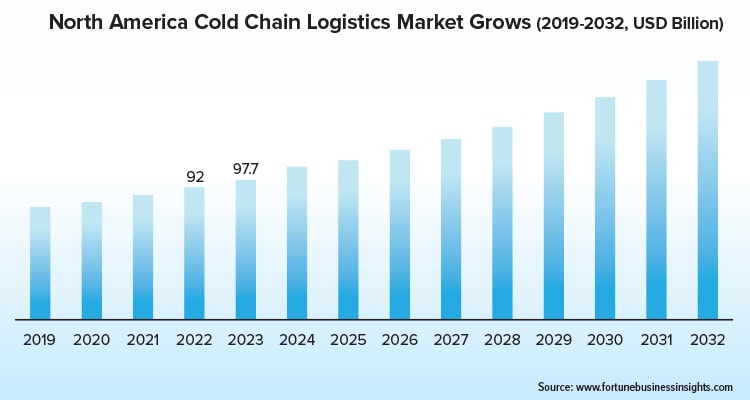
Expanding global food trade. Increasing demand for perishable food products, coupled with globalization and changing consumer preferences, is driving the growth of the cold chain logistics market. Growing international trade in fresh produce and seafood necessitates efficient cold chain infrastructure to maintain product quality and safety during transportation.
Rising demand for pharmaceuticals. The pharmaceutical industry’s growing emphasis on temperature-sensitive products—such as vaccines, biologics, and specialty drugs—is fueling the demand for cold chain logistics services. Strict regulatory requirements and the need to maintain product efficacy and safety during storage and distribution are driving pharmaceutical companies to invest in robust cold chain infrastructure.
Ecommerce and online grocery retailing. The proliferation of ecommerce platforms and online grocery retailing is driving demand for cold chain logistics services. Consumers increasingly prefer to purchase fresh and frozen food items online, requiring reliable temperature-controlled transportation and storage solutions to ensure product quality and freshness upon delivery.
Technological advancements. Technological innovations, such as IoT-enabled temperature monitoring devices, blockchain-based traceability solutions, and advanced refrigeration systems, are transforming cold chain logistics. These technologies enhance visibility, transparency, and real-time tracking capabilities, enabling more efficient cold chain management and reducing the risk of product spoilage or loss.
Stringent regulatory requirements. Stringent regulations and quality standards imposed by regulatory authorities, particularly in the food and pharmaceutical sectors, are driving the adoption of cold chain logistics services. Compliance with regulations such as the Food Safety Modernization Act in the United States and Good Distribution Practice guidelines in the pharmaceutical industry is essential to ensure product integrity and regulatory compliance.
Emerging markets and urbanization. Rapid urbanization and changing dietary preferences in emerging markets are creating significant opportunities for the cold chain logistics market. Rising disposable incomes, urbanization trends, and an increasing preference for convenience foods boost the demand for cold chain services to transport perishable goods from production hubs to urban centers efficiently.
